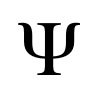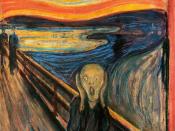For most individuals mild anxiety is a frequent occurrence. Human beings experience anxiety in a variety of ways and in various settings, whether it is in the work place, at home, in school, during leisure activities, or just about any other imaginable situation. The difference between a person who experiences routine stress (mild anxiety) and one who is diagnosable with anxiety or an anxiety disorder is the degree to which the person is anxious. According to the United States Mental Health Services, anxiety disorders are the most common or frequently occurring mental disorders. Despite this fact, anxiety disorders represent one of the least understood mental health problems of childhood and adolescence (Costello & Angold, 1995). Anxiety has been found to universally affect daily functioning in a variety of ways. Many studies have shown that anxiety tendencies develop in early childhood/adolescence and can cause mental health problems later in life.
When does anxiety begin? Feelings of anxiousness are not unique to over-burdened adults.
Individuals develop anxiety in childhood, as Freud explains. According to Freud, human personalities are developed generally before individuals reach the age of seven. Freud defines anxiety as "a felt, affective, unpleasant state accompanied by a physical sensation that warns the person against impending danger" (Feist & Feist, 2002, p. 33). Freud divides anxiety into three different types: neurotic anxiety, moral anxiety, and realistic anxiety. He defines neurotic anxiety as apprehension about the unknown. According to Freud, moral anxiety is a battle between the ego and superego. Realistic anxiety is similar to fear. While these are three specific types of anxiety, they may be experienced on levels ranging from mild to debilitating, or may be felt in various combinations (Feist & Feist, 2002).
Needless to say, there are many approaches to studying the causes of anxiety. One way is...


